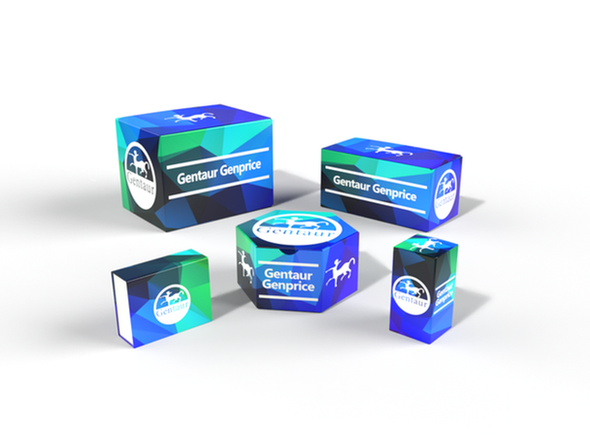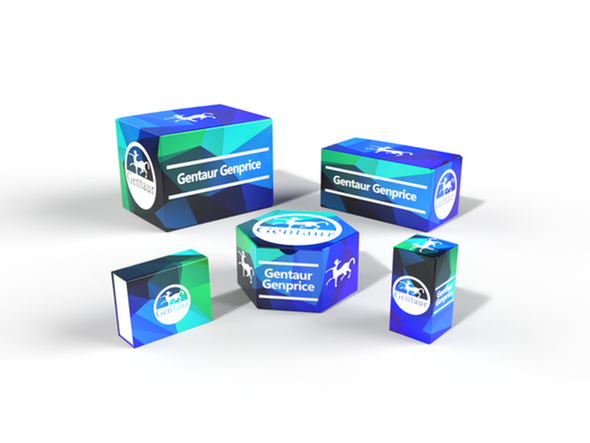LBD
AHR Antibody (Center) [APR32173G]
- SKU:
- LBD-APR32173G
- Availability:
- Usually ships in 5 working days
Description
AHR Antibody (Center) [APR32173G] | Gentaur UK, US & Europe Distribution
Product Category: Polyclonal Antibodies
Host: Rabbit
Species Reactivity: H, M
Specificity: This AHR antibody is generated from rabbits immunized with a KLH conjugated synthetic peptide between 555-582 amino acids from the Central region of human AHR.
Cellular Localisation: Cytoplasm {ECO:0000250|UniProtKB:P30561}. Nucleus {ECO:0000250|UniProtKB:P30561}. Note=Initially cytoplasmic; upon binding with ligand and interaction with a HSP90, it translocates to the nucleus. {ECO:0000250|UniProtKB:P30561}
Molecular Weight: 96147
Clone: Polyclonal
Gene Name: AHR {ECO:0000303|PubMed:8393992, ECO:0000312|HGNC:HGNC:348}
Gene ID: 196
Function: Ligand-activated transcription factor that enables cells to adapt to changing conditions by sensing compounds from the environment, diet, microbiome and cellular metabolism, and which plays important roles in development, immunity and cancer (PubMed:30373764, PubMed:23275542, PubMed:7961644, PubMed:32818467) . Upon ligand binding, translocates into the nucleus, where it heterodimerizes with ARNT and induces transcription by binding to xenobiotic response elements (XRE) (PubMed:30373764, PubMed:23275542, PubMed:7961644) . Regulates a variety of biological processes, including angiogenesis, hematopoiesis, drug and lipid metabolism, cell motility and immune modulation (PubMed:12213388) . Xenobiotics can act as ligands: upon xenobiotic- binding, activates the expression of multiple phase I and II xenobiotic chemical metabolizing enzyme genes (such as the CYP1A1 gene) (PubMed:7961644) . Mediates biochemical and toxic effects of halogenated aromatic hydrocarbons (PubMed:7961644) . Next to xenobiotics, natural ligands derived from plants, microbiota, and endogenous metabolism are potent AHR agonists (PubMed:18076143) . Tryptophan (Trp) derivatives constitute an important class of endogenous AHR ligands (PubMed:32866000, PubMed:32818467) . Acts as a negative regulator of anti-tumor immunity: indoles and kynurenic acid generated by Trp catabolism act as ligand and activate AHR, thereby promoting AHR-driven cancer cell motility and suppressing adaptive immunity (PubMed:32818467) . Regulates the circadian clock by inhibiting the basal and circadian expression of the core circadian component PER1 (PubMed:28602820) . Inhibits PER1 by repressing the CLOCK-ARNTL/BMAL1 heterodimer mediated transcriptional activation of PER1 (PubMed:28602820) . The heterodimer ARNT:AHR binds to core DNA sequence 5'-TGCGTG-3' within the dioxin response element (DRE) of target gene promoters and activates their transcription (PubMed:28602820) .
Summary: Tissue Location: Expressed in all tissues tested including blood, brain, heart, kidney, liver, lung, pancreas and skeletal muscle Expressed in retinal photoreceptors (PubMed:29726989)
Form: Purified polyclonal antibody supplied in PBS with 0.09% (W/V) sodium azide. This antibody is purified through a protein A column, followed by peptide affinity purification.
Storage: Maintain refrigerated at 2-8°C for up to 2 weeks. For long term storage store at -20°C in small aliquots to prevent freeze-thaw cycles.
Application: WB
Dilution: WB--1:500
Synonyms: Aryl hydrocarbon receptor, Ah receptor, AhR, Class E basic helix-loop-helix protein 76, bHLHe76, AHR, BHLHE76

![AHR Antibody (Center) [APR32173G] AHR Antibody (Center) [APR32173G]](https://cdn11.bigcommerce.com/s-1rdwiq712m/images/stencil/608x608/products/63316/63620/gentaur-genprice__26005.1661610467__29809.1661628092__75433.1661676199__77988.1661684280__64362.1661692443__82874.1661866645.png?c=1)




